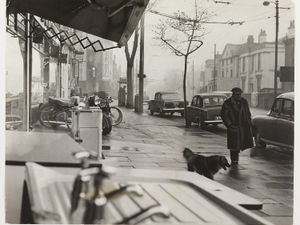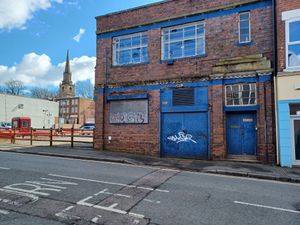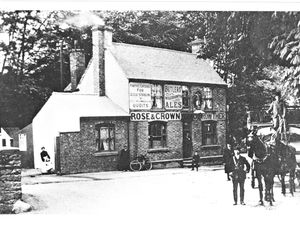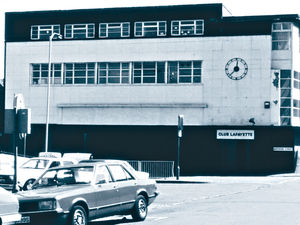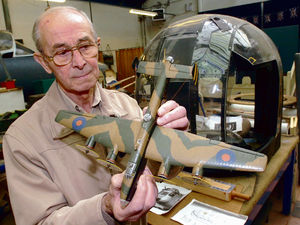Wolverhampton’s ‘Forgotten People’ are remembered at last
George Foster calls them the Forgotten People. Old Soldier, Waistcoat Man, Man in Suit, only Mrs Quinn is remembered by name.
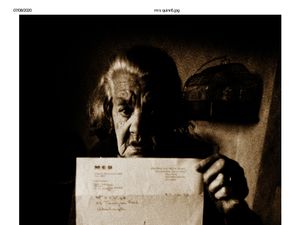
They say every picture tells a story, but George never got to find how the stories ended.
In 1973, he was a graphic design student at what was then Wolverhampton Polytechnic. He had a special interest in reportage photography, so one of his lecturers suggested he spent a bit of time on the then rundown Scotlands estate, capturing on camera the different characters who lived in the area.
The best part of five decades on, George's dark, dramatic pictures show just how much better off people are today, at least in material terms. But George also recalls a close-knit community where people made the most of their lot, and never forgot their sense of humour.
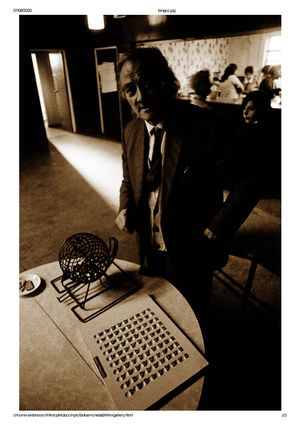
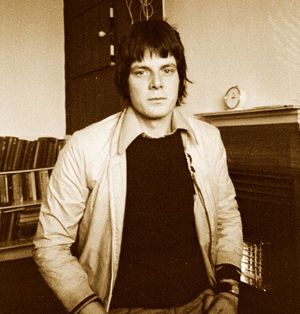
"I can still smell the place, the damp, the urine, the rubbish, and the neglected cold, grey houses that were well past their sell-by date," he says.
"For a rather innocent 21-year-old form a sheltered middle-class background, what I saw there remains with me to this day.
"It may have been nearly 50 years ago, but I recall my anger that people should be treated so badly."
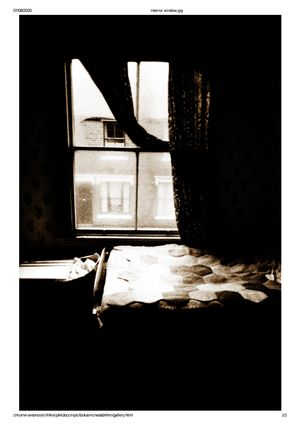

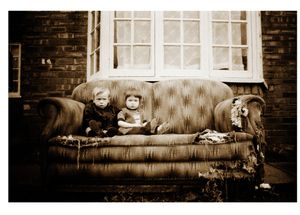
George has now used his pictures from the project, which at the time won him a photography prize, as the basis of a new book. And some of the pictures certainly paint a bleak picture of life on the estate at that time.
People of all ages stand in dimly lit, sparsely furnished rooms, with peeling plaster and bare floorboards, long before the latter became a style statement.
It was estates such as this which the Prime Minister, Boris Johnson, says shaped his political vision during his brief time as a reporter at the Express & Star in the 1980s. But it is fair to say that the two men came to very different conclusions from what they saw.
Mr Johnson, remembering being sent to report on a couple who were complaining about damp, described the tenants as being "prisoners of the system", and said it convinced him that the solution was to make it easier for working people to buy their own homes rather than be kept in sub-standard council accommodation.
"They were sitting there and with the heating on full blast and a baby crying, and the condensation dripping down the window, and there were these great black spores all over the wall," he would later tell the Conservative Party conference.
"The council wouldn’t do anything, and he felt he couldn’t do anything – because it was not his property, and I could see that he felt somehow unmanned by the situation.
"And I thought what a difference it would make to that family if they had been able to take back control – to coin a phrase. To buy that flat."
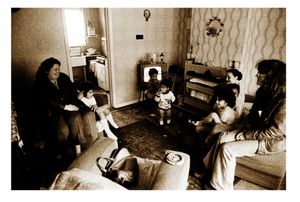
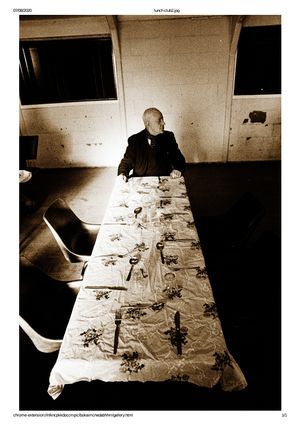
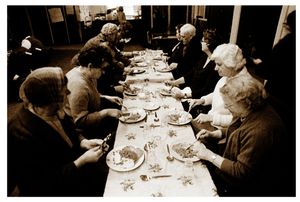
George takes a very different view.
"I don't think this present government cares about anybody except the rich," he says. "That anger I felt then still resounds today seeing the way that our present day government has not changed a great deal in its attitude to the poor."
George, who was presented with a Nikon camera as a prize for this project, was introduced to many of the local characters by an easy-going young social worker called Stewart, who he recalls as being well-liked by everyone on the estate.
Stewart, says George, would go from house to house, patiently listening to people's stories, and trying to sort out their many problems.
"He was a saint, he really was an amazing character," says George. "How he put up with that, I don't know."
The one character, apart from Stewart, who is identified by name is the formidable Mrs Quinn.
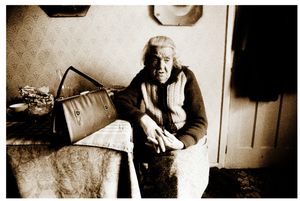
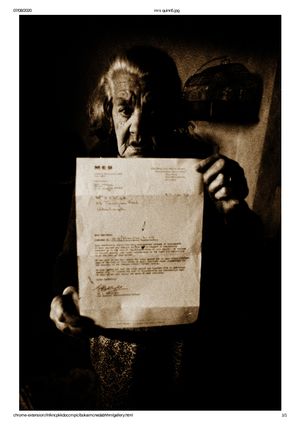
"Mrs Quinn really was a real old, tough, battleaxe who had been through everything," says George. "They were about to cut off her electricity, they had sent the final demand, and Stewart was pulling the strings, trying to make sure that didn't happen."
He recalls many of the people remaining stoically optimistic, despite their hardship, and the youngsters seeming oblivious to the problems around them.
One of the most haunting pictures is of a middle-aged man in a crumpled suit standing in a dingy hallway. The walls are half covered with wallpaper, half covered with peeling paint, the floor paved with grubby quarry tiles.
"I don't think that man had two pennies to rub together," George says sadly.
Another picture shows an ex-soldier, invalided out of the Army, talking to Stewart about his time in the forces, and proudly showing off the collection of military models he has made from polystyrene kits. In one picture he stands in front of an impressive diorama he has made, with the wallpaper hanging off the wall behind.
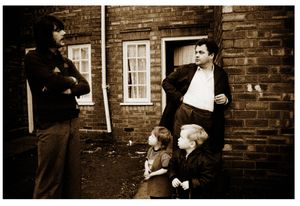

Another former squaddie, a veteran from the First World War, proudly holds a picture of his old regiment, and watches Princess Anne's wedding to Captain Mark Phillips on television.
There is also an atmospheric shot of a young woman standing on the stairs, looking through a broken bannister, which George likens to the bars of a prison.
The unkempt state of the estate is captured in pictures of the steps leading up to a row of terraced houses, which is strewn with litter, while another shows an overflowing bin filled with empty 'party eight' style tins of M&B Mild in an untidy back garden. 'Dave loves Iris' has been daubed on the wall of one bleak-looking bedroom, which is otherwise adorned with posters from teen magazines. Two children sit on a battered sofa which has been dumped in the garden of one of the homes.
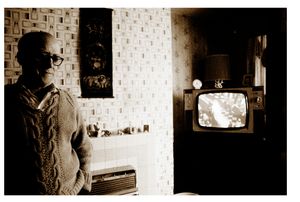
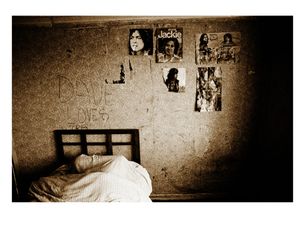
"The kitchens were horrible, the bathrooms were horrible, some of the houses looked as though they hadn't been touched since the 1940s," says George.
Not every house in the book is squalid, though, and some people appear to have taken a pride in their homes despite their hardships.
'Waistcoat Man' is a smartly dressed man, probably about 40 but carrying the haunted demeanour of somebody much older, and wearing browline spectacles typical of the time. At first glance his house looks tidy and well kept, but closer examination reveals a threadbare rug and worn-out furniture, belying the paucity of his means.
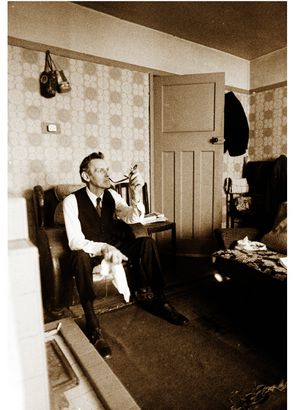

George also captures the strong sense of community on the estate. There are plenty of smiles at the luncheon club and bingo sessions held at the community hall.
"That was very lively, there were lots of people there," he says.
One of George's favourite pictures captures the inter-generational bond between a trendy young girl in a mini-skirt, and a middle-aged woman wearing a floral pinafore dress.
"I don't remember whether it was her mother or an aunt, but you could tell how fond they were of each other," he says.
He remembers a young couple with a baby who had just moved onto the estate.
"I think they seemed happy just to have somewhere to live," says George. Reflecting a change in attitudes, both parents are smoking, the mother holding a cigarette inches from the baby.
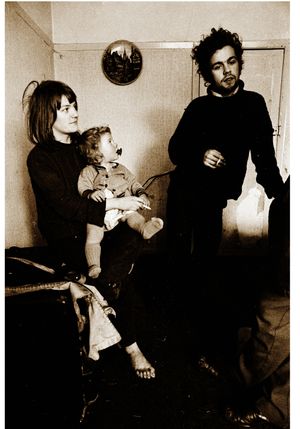
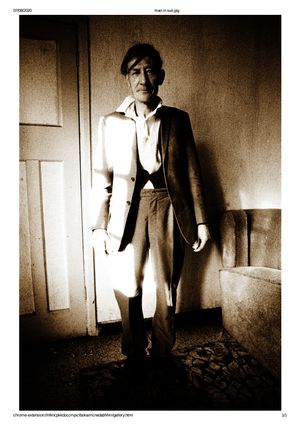
Another young mother is pictured with two children in a Victorian-style terraced house, which has both graffiti and mould on the bedroom walls, and very little in the way of furniture.
"I would love to know what happened to her," says George.
George, who started at the Polytechnic in 1970 says he has many fond memories of nights in the Molineux Hotel – now the city archives – and is still in touch with many of his student friends.
"We all came from very different parts of Britain, it was quite a cosmopolitan group of people," he says.
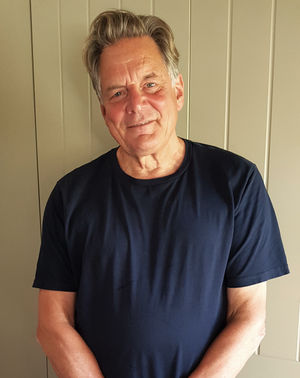
"We lived in the most horrible digs in Manlove Street, off the Penn Road, but it didn't seem to matter at the time because we were students. My room cost me £2.80 a week, it was very cheap, and I remember having a whale of a time.
"Thankfully, the (Scotlands) estate looks a lot better now. But it was an eye opener and an experience I will never forget."
Forgotten People by George Foster has now sold out, with some of the profits being donated to charities for the homeless.
Do you know any of the people featured in the pictures? Give us a call on 01952 241491.

